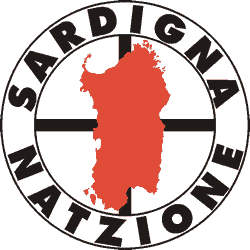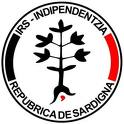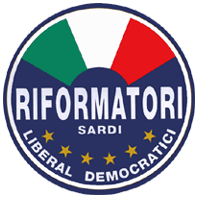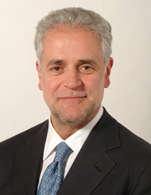
Proportional representation (PR) refers to any type of electoral system under which subgroups of an electorate are reflected proportionately in the elected body. The concept applies mainly to political divisions among voters. The aim of such systems is that all votes cast contribute to the result so that each representative in an assembly is mandated by a roughly equal number of voters, and therefore all votes have equal weight. Under other election systems, a bare plurality or a scant majority are all that are used to elect candidates. PR systems provide balanced representation to different factions, usually defined by parties, reflecting how votes were cast. Where only a choice of parties is allowed, the seats are allocated to parties in proportion to the vote tally or vote share each party receives.
The electoral threshold, or election threshold, is the minimum share of votes that a candidate or political party requires before they become entitled to representation or additional seats in a legislature.
The D'Hondt method, also called the Jefferson method or the greatest divisors method, is an apportionment method for allocating seats in parliaments among federal states, or in proportional representation among political parties. It belongs to the class of highest-averages methods. Compared to ideal proportional representation, the D'Hondt method reduces somewhat the political fragmentation for smaller electoral district sizes, where it favors larger political parties over small parties.

At the national level, the Republic of Cyprus holds elections for its head of state, the President of Cyprus, and for its legislature, the House of Representatives.
Elections in Israel are based on nationwide proportional representation. The electoral threshold is currently set at 3.25%, with the number of seats a party receives in the Knesset being proportional to the number of votes it receives. The Knesset is elected for a four-year term, although most governments have not served a full term and early elections are a frequent occurrence. Israel has a multi-party system based on coalition governments as no party has ever won a majority of seats in a national election, although the Alignment briefly held a majority following its formation by an alliance of several different parties prior to the 1969 elections. Suffrage is universal to all Israeli citizens above the age of 18. Israeli citizens living abroad have to travel to Israel in order to vote. Voting booths are made available on Israeli ships. Elections are overseen by the Central Elections Committee, and are held according to the Knesset Elections Law. Israel was ranked 47th most electoral democratic country in the world and the most electoral democratic country in the Middle East according to V-Dem Democracy indices in 2023.

Sardigna Natzione Indipendentzia, also known as Sardigna Natzione or SN, is a minor separatist and socialist political party in Sardinia, Italy. Its long-time leader is Bustianu Cumpostu.

The Sardinian Action Party is a Sardinian nationalist, regionalist and separatist political party in Sardinia founded by Sardinian anti-fascist intellectual Emilio Lussu. While being traditionally part of the Sardinian centre-left, the party has also sided with the centre-right coalition and, more recently, with the League.

Independence Republic of Sardinia is a regionalist, Sardinian nationalist, left-wing nationalist, social-democratic and non-violent separatist political party in Sardinia. The party, whose long-time leader has been Gavino Sale, supports the establishment of a "Republic of Sardinia" and its independence from Italy.

The Sardinian Reformers is a regionalist and liberal-conservative political party in Sardinia, led by Michele Cossa. The party, which has always been part of the centre-right at the Sardinian regional level, is a keen supporter of the free market, competition, globalization and a two-party system.

The Sardinian regional election of 2004 took place in Sardinia in Italy on 12–13 June 2004.

The 2005 Lombard regional election took place on 3–4 April 2005. The 8th term of the Regional Council was chosen. Roberto Formigoni was re-elected for the third time in a row President, defeating Riccardo Sarfatti.

The Sardinian regional election of 1994 took place on 12 and 26 June 1994.

The Sardinian regional election of 2009 took place in Sardinia, Italy, on 15–16 February 2009.

The 1991 Valencian regional election was held on Sunday, 26 May 1991, to elect the 3rd Corts of the Valencian Community. All 89 seats in the Corts were up for election. The election was held simultaneously with regional elections in twelve other autonomous communities and local elections all throughout Spain.

Lega Sardegna, whose complete name is Lega Sardegna per Salvini Premier, is a regionalist and Sardinian nationalist political party active in Sardinia, Italy.
Project Republic of Sardinia is a regionalist, Sardinian nationalist, social democratic and separatist political party in Sardinia, founded in January 2011 following a split from Independence Republic of Sardinia (iRS).

The 1991 Riojan regional election was held on Sunday, 26 May 1991, to elect the 3rd General Deputation of the autonomous community of La Rioja. All 33 seats in the General Deputation were up for election. The election was held simultaneously with regional elections in twelve other autonomous communities and local elections all throughout Spain.
The Italian electoral law of 2017, colloquially known by the nickname Rosatellum after Ettore Rosato, the Democratic Party (PD) leader in the Chamber of Deputies who first proposed the new law, is a parallel voting system, which acts as a mixed electoral system, with 37% of seats allocated using a first-past-the-post electoral system and 63% using a proportional method, with one round of voting. The Chamber and Senate of the Republic did not differ in the way they allocated the proportional seats, both using the largest remainder method of allocating seats.

The 2019 Sardinian regional election took place in this Italian region on 24 February 2019. The election was for all 59 elected seats of the Regional Council of Sardinia as well as the President of the Region who, along with the second placed presidential candidate, would also become members of the Regional Council.

The 2024 Sardinian regional election took place in Italy's Sardinia region on 25 February 2024. The election was for all 60 elected seats of the Regional Council of Sardinia, as well as the president of Sardinia, who automatically became a member of the Regional Council. The election was won by Alessandra Todde, who also became the first female president of Sardina. It was the first election of the 2024 Italian regional elections.



















